— By Gabriella Coslovich
A guide to this year’s Melbourne Art Fair for emerging collectors, blue-chip art buyers and culture obsessives alike.
Art fairs are an essential part of the global arts economy — think of the pulling power of Frieze, Art Basel and The Armory Show. With the majority held in Europe and North America, barely dented by the world’s recent economic woes, art fairs are now as much glittering social events as shopping sprees. While Australia’s largest art fair, Sydney Contemporary, has typically revelled in bigger crowds and sales, Melbourne is ramping up efforts to reposition its annual fair as a not-to-be-missed event.
As part of that quest, Melbourne Art Fair (MAF) chief executive Maree Di Pasquale has encouraged this year’s participating galleries to focus on a single artist rather than group shows. “With 300-plus global art fairs annually, it’s important that we create a point of difference,” Di Pasquale says. “As a show that is now 35 years old, we felt that our strength was in its origins, in the fair’s relentless support of living artists… and we feel this is best achieved through solo presentations and a highly curated offering that is characteristic of an event that takes place in — in my view — Australia’s cultural capital.”
She adds: “This is not just about encouraging solo exhibitions but rather lifting the curatorial standard of the fair. We started with a mission in 2018 to restart small and grow without compromise; 2024 is the third edition under this remit and undoubtedly the strongest edition to date.” The fair will again be held at the Melbourne Convention and Exhibition Centre (MCEC), with a layout designed by MCEC architects Denton Corker Marshall.
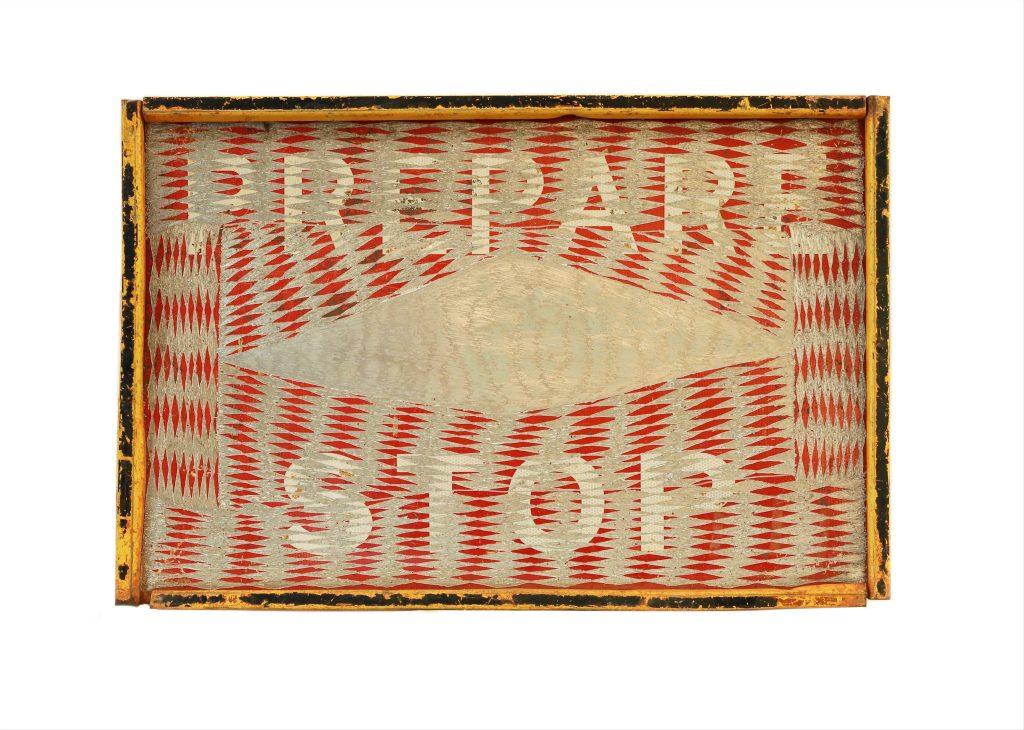
STOP IN YOUR TRACKS
The largest solo exhibition at this year’s fair is presented by Tolarno Galleries and features 24 new works by Yolŋu artist Wanapati Yunupiŋu spread over 100sqm. “I prefer a solo show as it allows the presentation of an artist in-depth,” says Tolarno Galleries director Jan Minchin. She believes MAF’s drive towards the solo exhibition is more “museum-like and arguably more respectful to artists”.
Yunupiŋu, a member of the Gumatj clan, lives on his coastal homeland of Birany Birany in north-east Arnhem Land. It’s the second time that his work has been honoured with a solo exhibition at the fair. The first was in 2022, presented by the Buku-Larrŋgay Mulka Centre, and it sold out. Over the four days of the 2022 fair, Minchin spent every minute she could looking at Yunupiŋu’s work — she loved it so much that she now represents the artist in Melbourne. “It was thrilling for me to discover Wanapati’s work and the positive response from collectors and visitors prompted me to present his solo show during this year’s fair; he deserves continued exposure,” Minchin says.
Yunupiŋu turns discarded metal and road signs into glistening artworks that he etches with his clan’s design — diamonds of red, white, black and yellow. Yellow is particularly significant for Gumatj people, deriving from an ancestral time when fire was first used in ceremony. Gurtha (which means fire) will be the exhibition’s dominant theme. “[Buku-Larrŋgay Mulka Centre manager] Dave Wickens will tell you about the day Wanapati burst into the art centre holding a reflective yellow, bent and twisted street sign, which he had found discarded on the side of the road to Yirrkala. He wanted to etch a contemporary interpretation of his clan’s sacred designs into the surface of this ordinary object,” Minchin explains. “This is what we’ll see at MAF: an array of powerful, shimmering works made by etching sacred designs and stories into the face of found metal scraps or road signs — litter from the landscape of north-east Arnhem Land.”
The works range in size from the relatively small (75x75cm) to a large red and gold work measuring 1.2×1.5m, and in value from $9000 to $35,000. “Two of the most striking are: Gurtha (END ROAD WORK) and Gurtha (PREPARE STOP),” Minchin says. “The surprise inclusion is a 2.7m-high Larrakitj [memorial pole] titled Larrayambu. This impressive hollowed-out Stringybark pole, which is etched rather than painted, is quietly radical.”
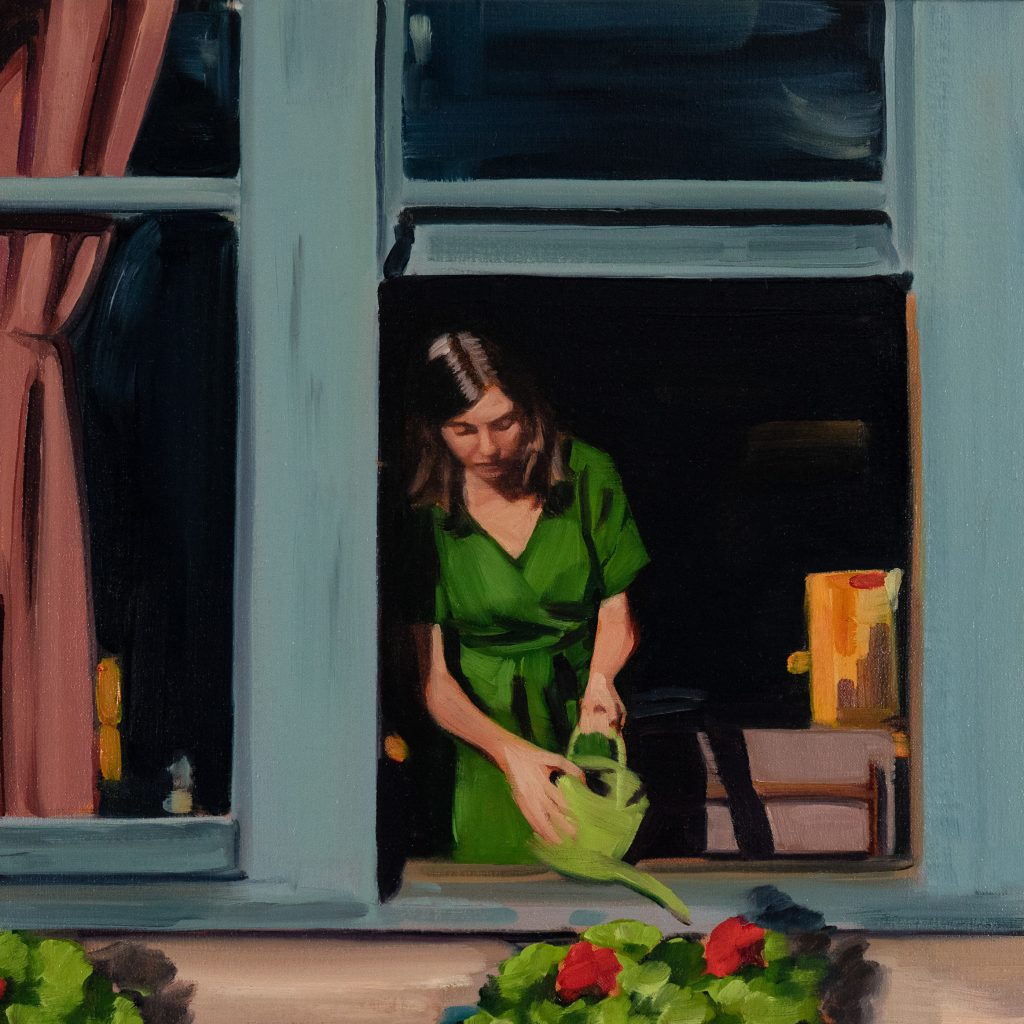
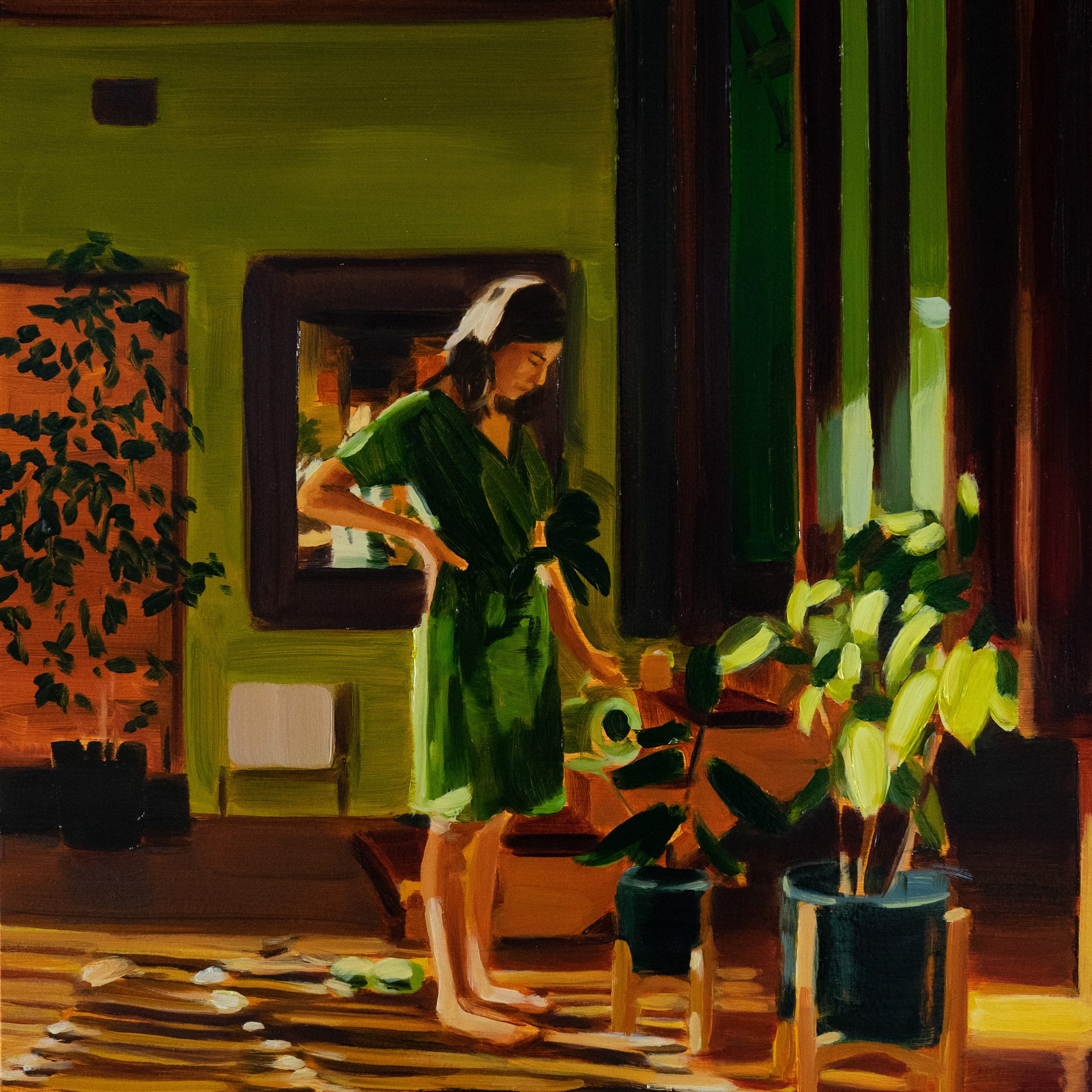
INSIDER INSIGHT
Mars Gallery, meanwhile, is using the fair to highlight new work by locally based artist Dani McKenzie, a painter who takes the commonplace — twilight streetscapes, solitary figures glimpsed through windows, late-night food deliveries — and gives it a hazy, otherworldly feel. Her pictures are often based on personal photographs, which she reinterprets in paintings that emit a psychological edge. The works being shown at MAF are inspired by a recent trip to Paris and include McKenzie’s largest work to date, a 1.5×2.7m streetscape.
Gallery director Andy Dinan has been exhibiting McKenzie’s work since she graduated from Sydney’s National Art School in 2016, and has watched her career flourish, gaining international recognition and representation by Los Angeles gallery Long Story Short, which also has spaces in New York and Paris. “She’s at her peak,” Dinan says, “I’ve watched Dani just grow and grow and grow, so I’m very proud to be bringing a solo show of this painter.”
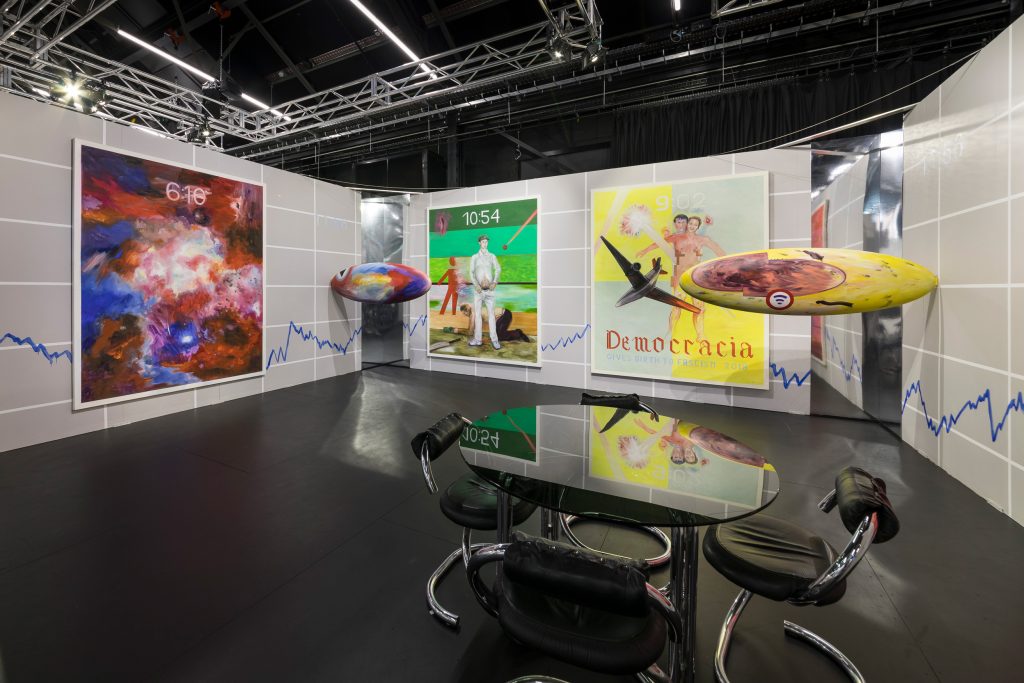
Other must-see solo exhibits include Kalli Rolfe Contemporary Art’s retrospective of Howard Arkley (1951-1999), best known for his pulsating, air-brushed paintings of suburbia celebrating the city’s double and triple-fronted brick veneer homes. As sole representative for this artist who in many ways embodies the spirit of late 20th-century Melbourne, Rolfe is showcasing works from Arkley’s estate including archival works on paper, paintings and sculpture.
Elsewhere at MCEC, millennial artist Zoë Croggon and her immersive three-dimensional collages are being presented by the Daine Singer gallery, and new photographic works by Burmese-Australian artist Shan Turner-Carroll will be on show thanks to Sydney’s COMA gallery.
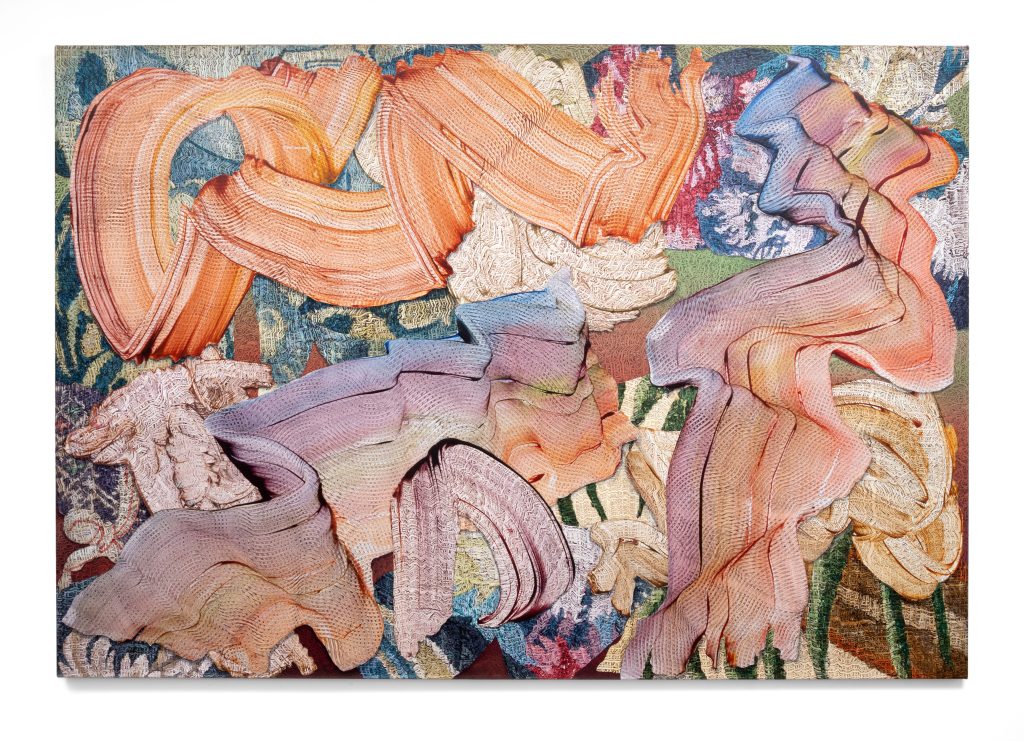
A TEXTURED ODYSSEY
Outside of the solo shows, Sullivan + Strumpf (which now has spaces in both Melbourne and Sydney) is serving up a group exhibition of Julia Gutman, Gregory Hodge, Ramesh Mario Nithiyendran and Lara Merrett. “All of them are accelerating in their careers, so we thought it was good to bring them together,” explains gallery co-director Ursula Sullivan. She adds that all four artists have “the golden recipe” of institutional appreciation, highly engaged collectors, and the support to explore their voice in an international context.
Each of the artists produces work that is textured and tactile, bringing a contemporary sensibility to traditional mediums. Julia Gutman (winner of the 2023 Archibald Prize), for example, creates patchwork portraits featuring embroidery, found textiles and oil paint. She skilfully stitches together fabrics donated by friends — old clothing, discarded tablecloths — to form intimate scenes of unhurried life: women reading, relaxing on picnic blankets, hanging out, languid, reflective, in repose. Lara Merrett creates billowing, dreamy works that speak to her love of ocean swimming by pouring washes of ink and acrylic paint on to cloth and linen.
Gregory Hodge’s abstract paintings have a similarly textile-like feel, as though large swatches of cloth have been draped across the canvas. Sullivan says it is clear the see the influence of French tapestry in recent works by the artist, who was locked down with his family in Paris when pandemic-related border closures were first enacted. “Greg’s work jumped up about 10 levels in one step because he started going around Paris looking at all the tapestries,” she suggests.
Encounters with Ramesh Mario Nithiyendran’s febrile ceramics and sprawling neon-lit sculptures are not forgotten in a hurry either. The Sri Lankan-born, Sydney-based artist draws on South Asian forms and imagery to create his garish, lumpy, and cheerfully grotesque idols from materials including terracotta, bronze, earthenware and porcelain. “They’re an absolute joy to live with and eternally engaging because there’s a lot going on,” enthuses Sullivan, who owns a couple of Nithiyendran’s works herself. “They’re queer, they’re contemporary, they’re tactile and I think there’s a great yearning for the tactile in today’s world [as] the opposite of the digital.” The artist currently has a solo exhibition at the Tramway gallery in Glasgow, Scotland, and his Avatar Towers — a wild, rambling installation featuring more than 60 figures — was acquired by the Art Gallery of New South Wales in 2020.
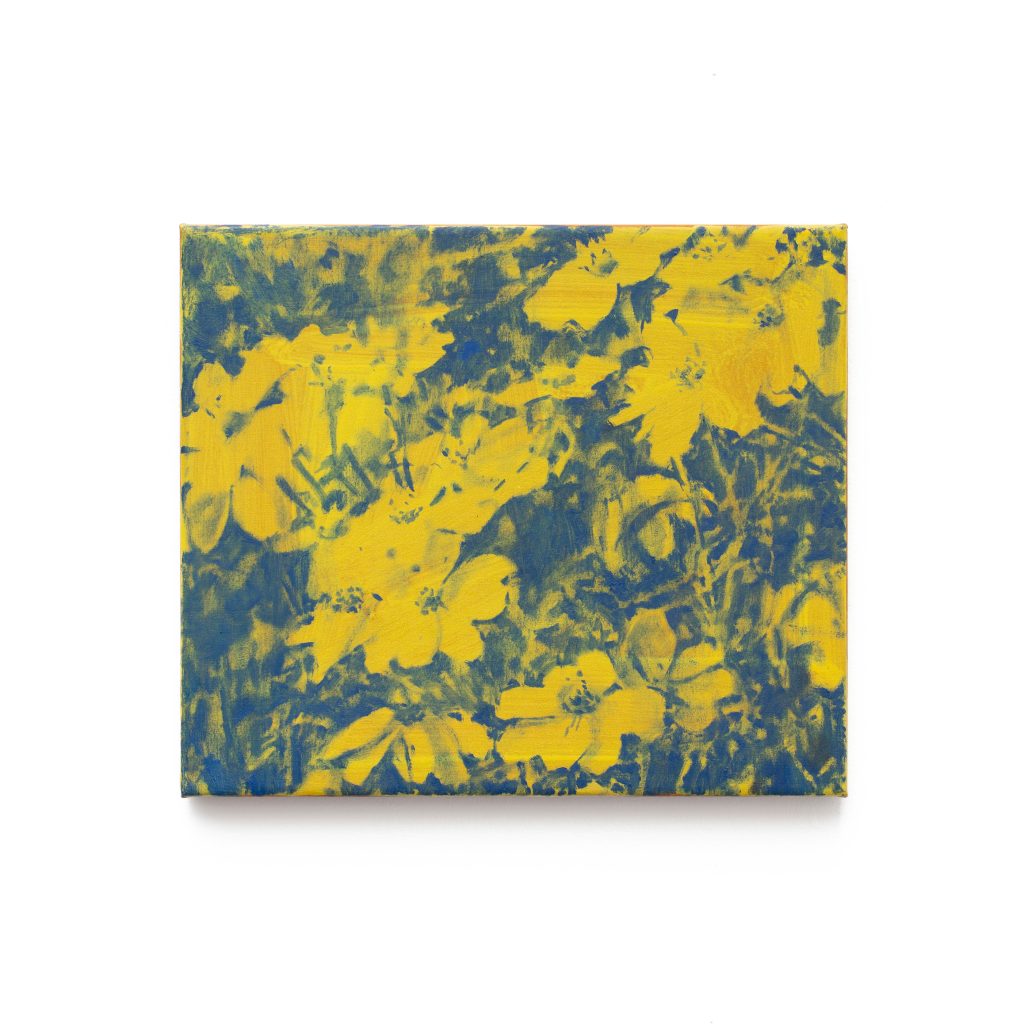
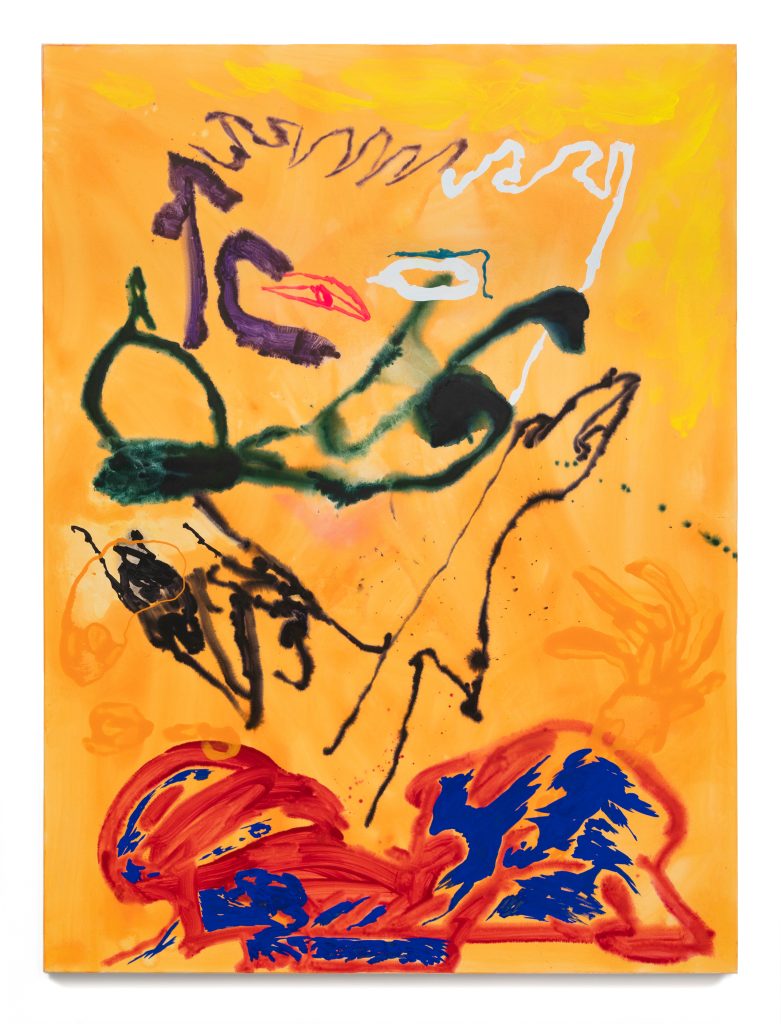
THE BOLD AND THE BEAUTIFUL
Another exhibitor with a footprint in two cities, Station Gallery, is showing two Melbourne artists — Dane Lovett and Julia Trybala — and two Sydney artists — Claire Milledge and Tom Polo. Director Jane Hayman explains: “We always use the art fair as a platform to showcase early to midcareer artists. We’ve pulled together and curated works by artists who traverse the space between figuration and abstraction. They all have unique styles and visual languages.”
Dane Lovett is known for his ethereal paintings of plants and flowers, and often uses a restricted palette which looks as though a filter of blue, sepia or some other subtle shade has been applied to the canvas. For the exhibition, Lovett has created a series of small, closely cropped paintings that capture moments of everyday beauty. Julia Trybala, meanwhile, homes in on the human body in her velvety paintings, crowding the canvas with an entanglement of ambiguous body parts. Following a sellout exhibition at Station Gallery Melbourne last year, Trybala has created a series of large paintings for MAF.
Claire Milledge uses an ancient German technique — hinterglasmalerei or reverse glass painting — to build mysterious, symmetrical images incorporating symbols of the occult. Following Milledge’s inclusion in the 2022 Biennale of Sydney and the National Gallery of Victoria’s 2020 Triennial, Hayman believes the time is ripe to show her work within the bustling environment of the fair. As for Tom Polo, Hayman dubs him “one of Australia’s most exciting painters”, noting a highly successful showing at Frieze Seoul in September. Polo’s portraits are a spontaneous rush of clashing colours painted with vigorous brush strokes, capturing varying emotional and psychological moods. He has created a series of large-scale works for MAF.
—
Lovers of experimental work should head to the Project Rooms section of the fair to discover works from Gertrude Contemporary as well as first-time exhibitors such as Sydney artist-run space Firstdraft, which is shining a light on Shannon Toth, Dustin Voggenreiter, Amy Prcevich, Danica Knezevic and Easton Dunne. Artists, curators, collectors and critics will also gather in the MAF Piazza to discuss news and ideas bubbling up in the art world. Maree Di Pasquale says: “A big role that an art fair plays is broadening the public consciousness for contemporary art […] and a great way to do that is to actually have the conversations live in front of you in the context of art itself, rather than off in an auditorium somewhere disconnected.”
Melbourne Art Fair runs 22–25 February at Melbourne Convention and Exhibition Centre.
